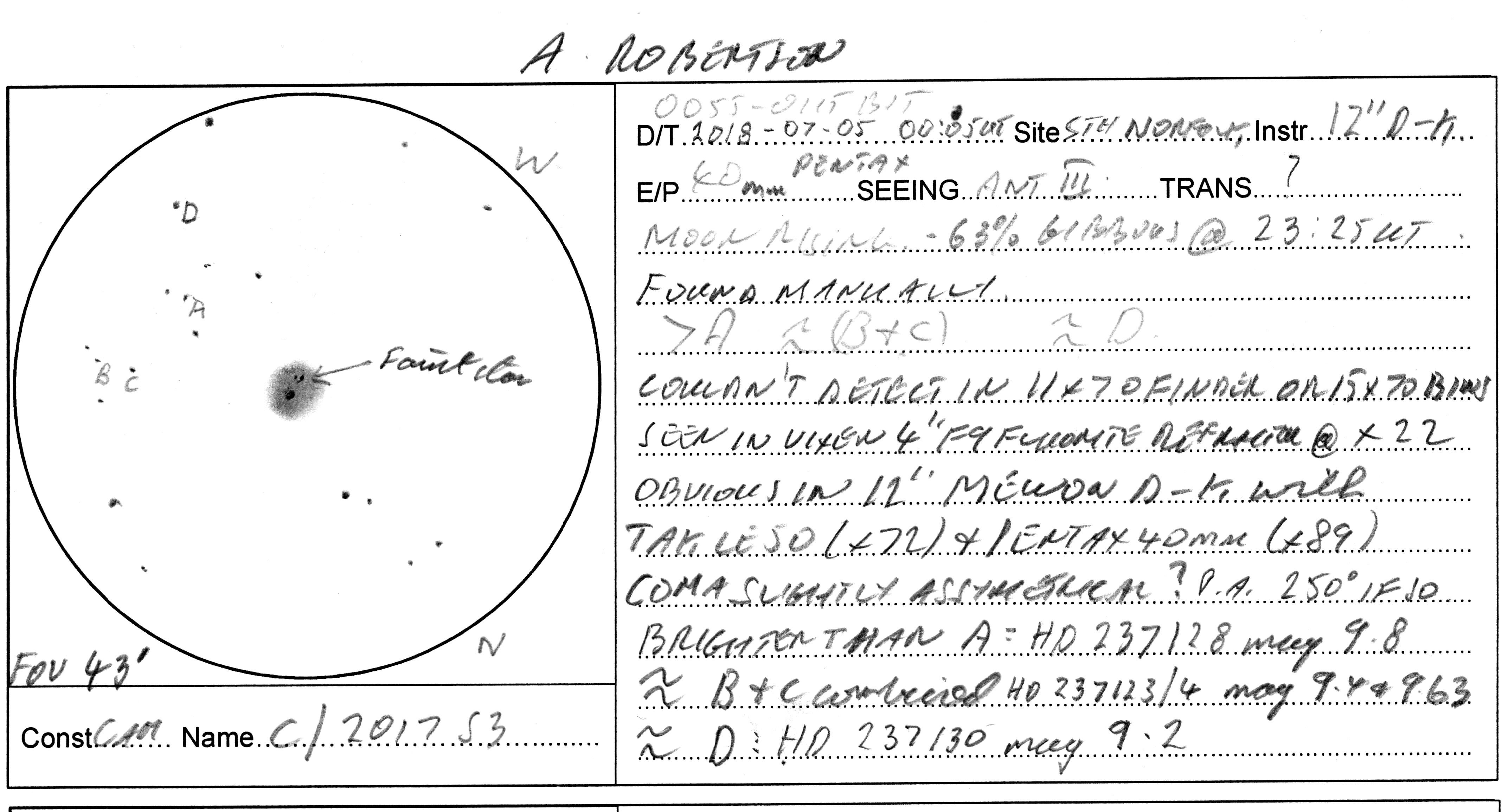My sketch & report attached. I decided to find it manually for the fun of seeing how difficult it was to detect. It was quite easy as it turns out. By the time it had fully cleared an obstruction to the North it was as dark as it would get astro dark wise ( about 1am BST) but that gibbous moon was now getting in the way! It will be much better in a couple of nights. I couldn’t see it in my 11x70 finder nor my 15x70 binoculars but did surprisingly see it in my 4” Fluorite refractor at only x22. It was very obvious in my 12” Mewlon at x72 (Tak LE 50mm) and x89 (Pentax 40mm). Observed and sketched straight through (fully inverted) with the 40mm Pentax. Field stars drawn in (the faint star in the coma is not double just my poor sketching in low light – ditto another close ‘double’ in the FOV). It had a stellar core and a fairly uniform coma except I did wonder if it was very slightly asymmetrical or extended in PA 250 degs. I then de-focused the field stars to estimate it’s magnitude and labelled relevant ones A,B,C,D. I considered it brighter than A, about as bright as B & C combined and similar in brightness to D. I checked my planetarium software this morning (Sky Tools 3) and found its position exactly matched my sketch and field stars. So I could easily identify the field stars used: A: HD 237128 mag 9.8 B & C: HD 237123&4 mag 9.4 & 9.63 D: HD 237130 mag 9.2 So I estimate it’s visual magnitude at mag 9.2. |

Page last updated: Tue 4 Apr 21:09:28 BST 2023